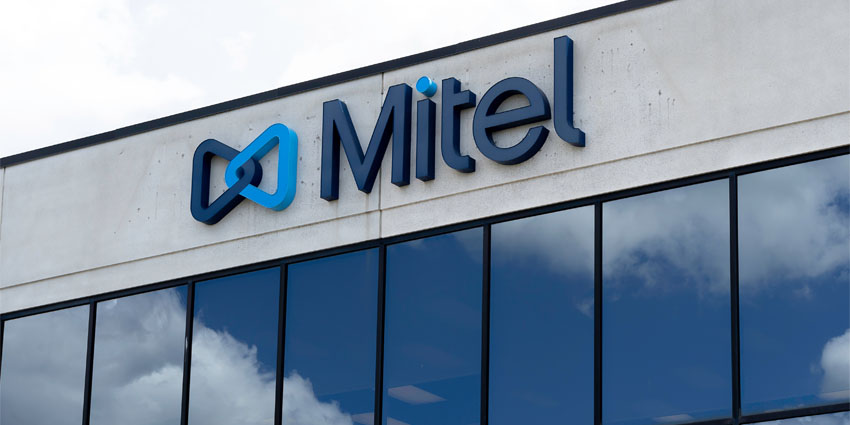In a barely disguised swipe at some of its competitors in the global business communications market, Mitel proudly prefaces its marketing for the MiVoice Office 250 with the following declaration:
Mitel doesn’t make set-top-boxes, gaming devices, TVs or other consumer electronics. We only make products that help businesses communicate better. It’s what we do best.
And why would it bother with anything but business telecommunications solutions? Over 40 years in the trade, the Canadian corporation has earned itself a NASDAQ listing, a combined annual revenue of $1 billion and number one market share in Western Europe.
MiVoice Office 250
Mitel’s message is clear – the consumer electronics giants might try their hand at business telecoms, but if you want the real deal, trust the specialists.
The MiVoice Office 250, formerly the Mitel 5000, is a product which draws on all of those decades of expertise. A hybrid IP and TDM switching PBX server, the Office 250 looks back at the technology on which Mitel built its name, and forward to the modern world of IP enabled multisite trunking and integrated Unified Communications software.
It is a product aimed at the SMB market, promising not only the flexibility to deploy legacy analogue and digital endpoints side by side with the latest IP and SIP phones, but also to integrate remote sites and mobile devices into the same telephone network, streamlining communication from any location.
On top of all that, Mitel claims the Office 250 will save its small and medium sized customers money, allowing them to make use of existing architecture while enjoying the cost per call benefits of VoIP, and boosting collaboration and productivity with a ready suite of out-of-the-box UC applications.
In this review, we’ll consider if experience counts for anything in the PBX market these days, and whether Mitel’s expertise tells in putting together a package suited to the needs of SMBs. We’ll assess the flexibility of the Office 250, and run the rule over the features it has to offer.
Please remember, the views contained in this review are those of the author only. UC Today is a completely independent source of news, opinion and insight serving the needs of the UC industry and is not involved in the sale of any particular products.
How Does It Look?
The latest Office 250 platform comes in a 15.5” black and silver rack mountable 2U chassis, full dimensions 394mm x 222mm x 89mm. The server is designed to be easily scalable and easy to deploy wherever a customer chooses, whether on a shelf, in a rack or wall mounted.
The front panel features an LED display and five navigation and control buttons, with just two USB Type A and Type B ports alongside. Most of the ports and connections are located on the back panel in two main sections: a processor module with DEI expansion, four trunk ports, MoH (music on hold) and Page (external public address) connections, two more USBs, two ethernet ports, a door relay and compact flash storage; above this are four modules which support (optionally) a 16 port digital desktop module, a four port loop start module, a four port single line module and a two port dual T1/E1 module for ISDN30 line connections or a BRI Module for ISDN2e lines.
What Can It Do?
In terms of the number of endpoints supported, the Office 250 does exactly what it says on the tin – it supports up to 250 users, with a flexible mix of IP, digital, DECT, analogue and single line extensions. Beyond 250 users you can stack the controllers together and essentially network them together for greater capacity.
For legacy digital telephone support the Mitel offers Digital Endpoint Module (DEM-16) expansion cards. Up to three cards can be installed on a single unit, offering a total of 48 additional digital connections. In addition, the main Office 250 server can also be mounted with up to four Digital Expansion Interface (DEI) units. The DEI is a 1U rack mounted box offering the same options for up to three DEM-16 cards / 48 digital extensions per unit as the main server. In total, then, that adds up to 240 possible extra digital telephones.
The Office 250 supports a wide variety of Mitel endpoints, including the MiVoice 8528 and 8568 digital phones, the 5300 series IP phones, 5300e GigE IP phones, and the 5600 SIP / Wireless phones. It also operates the MiVoice Conference Phone, Mitel MiCollab and Mitel Phone Manager.
Users get direct access to a powerful suite of PBX and call management functions. The Office 250 comes bundled with Unified Voice Messaging, complete with email synchronisation and automated attendant, automatic call routing based on which agent has been idle longest, balanced call count and circular and linear distribution, plus an embedded call reporting capability.
Voice conferencing is available on a ‘Meet Me’ or ad hoc basis, with up to 20 members per conference and the option to run up to 40 conferences at once. With the MiVoice Conference Phone, there is also support for advanced meeting room audio options.
One of the key USPs of the Office 250 is the broad range of options it has for supporting remote networking and mobile connections. The server itself can support IP networking for up to 99 inter-site connections and easy teleworking by remote deploying Mitel IP phones to remote locations without the need for a VPN.
In addition, device twinning and hand-off mean users can register up to nine devices on the same account – desk phones, mobiles, DECT wireless, home phones etc. All twinned devices share the same number and voicemail, and inbound calls can either ring all devices simultaneously or bounce from one to the next, dramatically increasing availability to customers and clients. In addition, hand off allows calls in progress to be easily transferred from one device to the next, for example from a desk phone to a mobile or wireless if the agent needs to leave their desk mid call.
Applications
The feature capabilities of the Office 250 have also recently been enhanced with the launch of the MiVoice Application Suite 5.0. Ostensibly an upgrade of the Mitel Phone Manager app, a CTI interface for the Office 250 system, the MiVoice Application Suite 5.0 actually makes five very powerful applications available in one – Phone Manager and Phone Manager Mobile, MiVoice Call Reporter, MiVoice Call Recorder and MiVoice Campaign Manager.
What do we like?
Office 250 is a communications platform for the SMB market with enterprise sensibilities. While it offers legacy endpoint compatibility and straightforward out of the box solutions, the range and type of functions it offers are those more usually associated with the mid-market upwards.
Take the Office 250 Attendant Console, which offers advanced call processing and ultra-fast routing from a desktop console – the sort of product you would find being used at the reception desk of a large office building or the contact centre for a multisite operation. Or the new platforms bundled into the revamped Office Application Suite – Call Reporter, Call Recorder and Campaign Manager, a progressive outbound dialler. Again, these are advanced analysis, monitoring and project management tools typically sought after by large businesses, here being packaged and sold to smaller operations.
Who is it for?
In keeping with its feature list, the Office 250 is a product for small to medium sized businesses with big ambitions. The ability to expand capacity close to 500 endpoints and connect up to 99 remote IP extensions means the Office 250 can very much grow with a company. While its hybrid IP and TDM architecture allows businesses to migrate to full VoIP networks at their own pace, the greatest flexibility it offers is the ability for users to connect different devices and therefore access the network as and when they need. And then there is the range and depth of features available, again all accessible from a wide range of devices. From robust call management to all-in UC tools, unified messaging to advanced contact centre and outbound dialler options, the Office 250 offers a solution for all.
What is it compatible with?
MiCollab Client and the MiVoice Office Application Suite offer a wide range of integration options with third party software platforms, including Microsoft, Office 365 and Salesforce CRM. In fact there’s even an API (for software developers), which also allows you to integrate your telephones tightly with your business processes.
How much does it cost?
Purchasing options for the Office 250 very much depend on deployment – how many endpoints you are looking for, what hardware (if any) you wish to purchase with it and what features you want included. As everything is sold as a package, there is no real guide price for the Office 250 server itself. The best bet is to contact a Mitel reseller directly for a quotation.
UC Today Opinion
So what do decades of dedicated, specialist service in business communications count for in today’s modern UC world? Well, quite a lot, it seems. We often see the ‘enterprise class features’ line in the marketing spiel for SME telecoms products, but the MiVoice Office 250 is an enhanced IP PBX system that can really back it up.
What is perhaps telling about the Office 250 is that this is a product Mitel has really stuck with. Even through a chassis redesign and a rebrand, Mitel has avoided the temptation to leave behind an older product and replace it completely with something new. Instead, the Office 250 has grown over time into the product available today, with Mitel fine tuning its offering, as it has done recently with the release of the 5.0 Application Suite, gradually.
The result is a very impressive product. Flexible endpoint options, broad scalability, readily available remote and mobile network access, high performance PBX tools plus a huge range of additional UC application options, from a full suite of multimedia messaging applications to the kind of advanced, specialised management solutions favoured by large businesses – the Office 250 has it all.
Are you a MiVoice Office 250 customer or reseller? What are your thoughts about it? How do you rate it in terms of performance and features? Do you feel it represents good value, or are there things you think could be improved? Please share your views with us in the comments section below, we look forward to reading every response. And if you know other people who might want to join in, why not share this article on social media and get them involved too.







